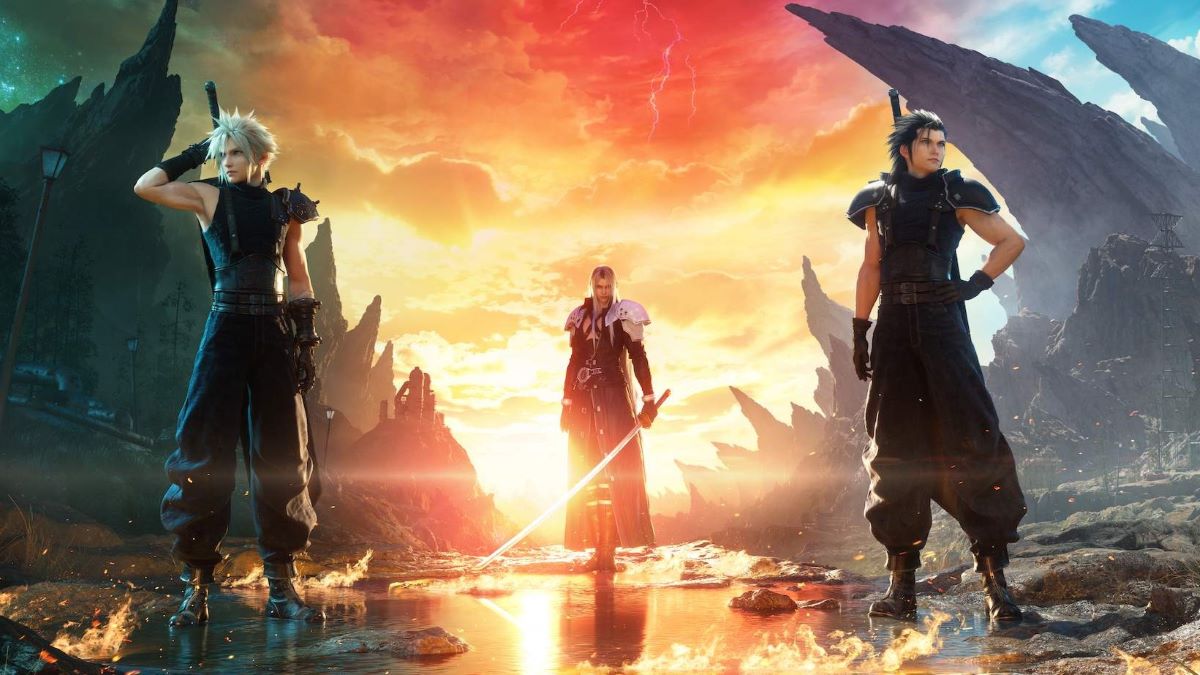Final Fantasy VII Rebirth is here and is geared up to be one of the biggest games of the year. It already boasts “universal acclaim” on Metacritic, RPG fans are salivating over it, and social media is about to light up with discussion of its story, characters and themes. But, if you haven’t been keeping up with all things Final Fantasy you may feel left out in the cold.
Rebirth is simultaneously a remake and sequel with a complex place within the sprawling Final Fantasy franchise. So, if your girlfriend, son, wife or friends are about to disappear into a world of spiky-haired drama and ludicrously-sized swords, here’s a prep guide so you can at least follow their feverish enthusiasm. Heck, why not even play the game for yourself?
What is Final Fantasy?
Let’s start with the basics. Square Enix’s Final Fantasy franchise began in 1987 with the original Final Fantasy on the NES. To date, there have been 16 mainline entries in the series and innumerable spinoffs and crossovers in most genres, ranging from tactical RPGs, online multiplayer games, rhythm action, fighting, and so on.
Despite this being a huge franchise it’s surprisingly easy to jump in. Each mainline entry begins a new story in a new world with an entirely fresh cast of characters. Though separate from each other, almost every game will feature elements like chocobos (rideable giant birds), someone called Cid, various monsters, elemental gods like Shiva and Ifrit, and all too often there will be crystals woven into the story.
Why is Final Fantasy VII so popular?
1997’s Final Fantasy VII was the moment Japanese RPGs exploded in popularity in the West. Previous entries had been popular games, but this was the first developed with CD-ROM technology in mind, allowing for an enormous amount of detailed pre-rendered backdrops, fully animated CGI videos, and the power of the 32-bit PlayStation allowed for a 3D world map and polygonal characters.
But it’s not just the tech boost that made VII so iconic. It has arguably the greatest cast of characters in Final Fantasy history: lead hero Cloud and his nemesis Sephiroth are all-time gaming icons, and key characters like Aerith and Tifa are hugely popular. VII also ditched the traditional fantasy setting for cyberpunk and an ecologically conscious anticapitalist story that’s aged remarkably well.
VII was a huge hit in the 90s and cemented its place among the greatest games of all time. Since then it’s spawned a mini-franchise of its own, with spinoff games, mobile titles, a prequel, novels, and a CG animated movie.
The modern remakes
Calls to remake Final Fantasy VII on modern hardware were being made as early as the early 2000s and at one point Square Enix even announced a version was in development for PlayStation 2. That never came to anything, though in 2005 they released a PlayStation 3 tech demo designed to show off the system and how the game would look on modern hardware.
Fans were hyped, but little did they know it would be 15 long years before that promise was fulfilled. Final Fantasy VII Remake landed on PlayStation 4 in 2020 to rave reviews and, as it was released in the early stages of the COVID lockdowns, became one of the best-selling games on the system.
But Remake was only the first entry in a trilogy, with VII‘s plot being spread over three distinct games. Rebirth is the second entry, picking up where Remake left off and continuing the story. Sometime in the late 2020s, we’ll get the final installment, which judging by the naming scheme will probably be called Final Fantasy VII Resurrection (that or Reunion). Basically, think of Rebirth as The Empire Strikes Back of VII.
What to play?
This is a little tricky. Without spoiling Remake it eventually proves to be somewhere between a remake and a loose sequel to the 1997 game. Remake and Rebirth work perfectly well as standalone games, though certain story beats will hit harder if you’ve already played the original Final Fantasy VII. Fortunately, that game is widely available digitally with modern quality-of-life improvements, though you’d need to have the stomach to play through a lengthy 27-year-old video game.
So, if you want to catch up with Rebirth here’s what to play:
- Final Fantasy VII (1997) (optional yet important)
- Final Fantasy VII Remake (2020)
- Final Fantasy VII Remake Intergrade (a DLC story featuring a side character)
I’m envious of anyone who’s never experienced this incredible story before, so if you want to learn what all the fuss is about now is the perfect time to jump on.

